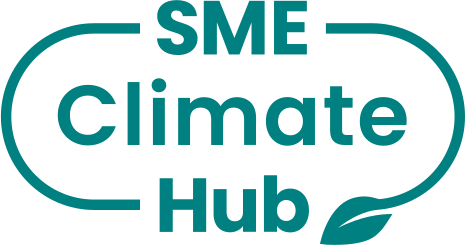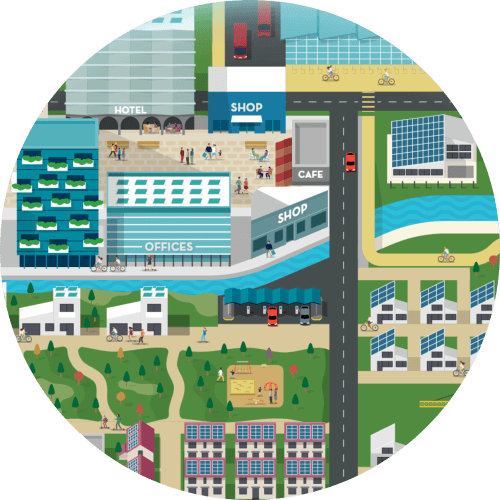Descubre los pasos que puede seguir tu empresa hacia un futuro más sostenible con nuestros recursos gratuitos.
QLM Technology Ltd's Climate Report
Introduction *
Commitment And Targets *
Own emissions *
Value chain emissions *
(optional)Actions and plans to reduce emissions *
Climate Solutions *
(optional)Management and strategy *
(optional)Results, challenges and outlook *
Introduction *
reporting year
*2023
number of employees in the reporting year
*17
Commitment And Targets *
net zero target year
*2030
Base year
*2021
comment on your net zero targets
*QLM’s Net Zero targets are ambitious for a business that is seeking to scale up, as the growth will inevitably lead to a higher carbon footprint in terms of both scope 1, 2 and 3 emissions. However, our unique lidar-based continuous monitoring system for methane emissions provides scope for drastic emissions reduction programs in our customer base, far outstripping any rise in emissions that QLM undergoes in its expansion. Even then, we will be committing ourselves to finding economy, sustainability and efficiency in our processes that minimizes QLM’s environmental impact and would lead to Net-Zero emissions before the benefits of our emissions monitoring solution were considered.
near-term scope 1 target
*30
target year
*2026
near-term scope 2 target
*40
target year
*2026
comment on your near-term targets
*The targets set here are based on QLM’s projections for sales growth of our quantum gas lidar, balancing emissions reductions as a result of lidar deployment at customer sites, and efficiencies in the supply of energy that is purchased, with the growth in carbon footprint as a function of expansion. The Scope 2 targets are more uncertain than the Scope 1 targets, as fluctuations in energy prices due to availability have the potential to influence its sourcing. QLM will be seeking to source energy only from sustainable sources, minimizing the impact of operational expansion even as energy consumption increases.
Own emissions *
scope 1 emissions
scope 1 emissions (metric tons co2e)
*14.8
own vehicles
*14.8
metric tons CO2escope 2 emissions
scope 2 emissions (metric tons co2e)
*5.84
total energy consumption (kwh)
*16000
renewable energy
*50
purchased electricity
*5.84
metric tons CO2eRenewable electricity (%)
50
purchased steam
*N/A
Renewable electricity (%)
-
purchased heating
*N/A
Renewable electricity (%)
-
purchased cooling
*N/A
Renewable electricity (%)
-
Comment on your energy consumption
*Across three premises, each of which are managed buildings where QLM does not have total control over the source of the energy, QLM’s heating and cooling consumption is included in the total electricity consumption, and as such has no component of its own. QLM’s R&D hub in Bristol operates on 100% renewable electricity, and its manufacturing and photonics hubs in Cardiff and Paignton obtain a proportion of electricity from renewable sources (this proportion is set to rise as a matter of process). Energy consumption will inevitably rise as QLM expands to meet the increasing demand for the quantum gas lidar, and it will be imperative to minimize the impact of this by increasing the proportion of purchased electricity from renewable sources to as close to 100% as the premises allow.
Value chain emissions (optional) *
scope 3 emissions
scope 3 emissions (metric tons co2e)
*Not measured
supply chain related - upstream emissions
customer related - downstream emissions
Actions and plans to reduce emissions *
Scope 1 Actions
own facilities
N/A
QLM does not own any of its facilities, and there is no scope for facility purchase between now and projected Net Zero deadlines.
own vehicles
Yes
QLM does not plan to increase the fleet size of vehicles that it operates (one van), and has launched the Electric Car Scheme (www.electriccarscheme.com). While not strictly QLM’s “own” vehicles, this initiative assists employees in the lease of an EV, allowing subscribers to reduce their operational running costs and contribute to a reduced overall environmental impact.
own processes
N/A
QLM’s processes are neither physical nor industrial, and do not generate reportable emissions.
scope 2 actions
purchased electricity
Yes
As QLM does not own the premises in which it operates, it does not have have overall control over the sources of its electricity. However, as expansion takes place, it will have control over what premises it expands into. Any new premises QLM occupies will need to be supplied by 100% renewable electricity as a basic requirement, increasing the proportion of renewable electricity in the energy budget as the company grows.
purchased steam
N/A
QLM does not employ steam in any of its operations.
purchased heating
N/A
All of QLM’s purchased heating is incorporated in its electricity spend. No gas heating is operated in any premises.
purchased cooling
N/A
All of QLM’s purchased cooling is incorporated in its electricity spend.
scope 3 actions
supply chain related (upstream)
customer related (downstream)
i have asked my suppliers to halve emissions before 2030 and join the un-backed race to zero campaign
*No
i have communicated my commitment and actions to my business customers and asked them to join the un race to zero
*No
Climate Solutions (optional) *
What percentage of your total revenue comes from sales of climate solutions?
*100
Provide descriptions/names of your climate solutions:
*QLM Technology has developed a new type of Lidar – based on quantum technology – that combines Lidar and gas absorption spectroscopy with single-photon detection to count gas molecules, building a 3D picture of objects and gas plumes that shows the exact location of an emission source. This novel imaging technology can detect, visualize, localize and quantify plumes of gas molecules from a distance beyond 200 m using automated or remote manual control modes. Emission source characteristics such as plume size and shape, gas emission rate, duration, location, persistence and timing/quantity patterns are measured by the system to determine the importance or urgency of the individual source. Analytics then transform these data into prioritized actions for remediation. Detected emission events are categorized, logged and digital alerts including this information sent to operators for follow-up actions. The QLM camera operates as an IoT device and can be deployed on internal networks or connected through a cloud interface, allowing access to both a live GUI for camera control and visualization and to a configurable automation system that directs networked cameras to systematically and repeatedly scan assets on a site for emissions, raising alerts for events beyond set parameters.
Methodology used to assess these as climate solutions:
*The quantum gas lidar enables avoided emissions. Industrial producers of methane (such as oil & gas processing, wastewater treatment, landfill operation, and biogas production) can use the quantum gas lidar to continuously and autonomously monitor their plant emissions. Leaks are identified and can be addressed more quickly, resulting in lower environmental impact and greater efficiency of operation. This represents a major step forwards over the current process of intermittent, labour intensive “walkover” studies, where each component in an operating site is individually checked for emissions by a survey team, and even more so over a “top-down” estimation of the site emissions as a function of equipment present and projecting operating time.
How much of your research and development budget is allocated to climate solutions?
*100
are you investing in climate and/or nature outside your value chain?
*Yes
provide details of the project/s you invest in:
*QLM has launched into the Electric Car Scheme (www.electriccarscheme.com). While not strictly QLM’s “own” vehicles, this initiative assists employees in the lease of an EV, allowing subscribers to reduce their operational running costs and contribute to a reduced overall environmental impact.
Management and strategy (optional) *
Results, challenges and outlook *

QLM Technology Ltd's Climate Report
QLM Technology Ltd's Climate Report - 2023
Introduction *
reporting year
*2023
number of employees in the reporting year
*17
Commitment And Targets *
net zero target year
*2030
Base year
*2021
comment on your net zero targets
*QLM’s Net Zero targets are ambitious for a business that is seeking to scale up, as the growth will inevitably lead to a higher carbon footprint in terms of both scope 1, 2 and 3 emissions. However, our unique lidar-based continuous monitoring system for methane emissions provides scope for drastic emissions reduction programs in our customer base, far outstripping any rise in emissions that QLM undergoes in its expansion. Even then, we will be committing ourselves to finding economy, sustainability and efficiency in our processes that minimizes QLM’s environmental impact and would lead to Net-Zero emissions before the benefits of our emissions monitoring solution were considered.
near-term scope 1 target
*30
target year
*2026
near-term scope 2 target
*40
target year
*2026
comment on your near-term targets
*The targets set here are based on QLM’s projections for sales growth of our quantum gas lidar, balancing emissions reductions as a result of lidar deployment at customer sites, and efficiencies in the supply of energy that is purchased, with the growth in carbon footprint as a function of expansion. The Scope 2 targets are more uncertain than the Scope 1 targets, as fluctuations in energy prices due to availability have the potential to influence its sourcing. QLM will be seeking to source energy only from sustainable sources, minimizing the impact of operational expansion even as energy consumption increases.
Own emissions *
scope 1 emissions
scope 1 emissions (metric tons co2e)
*14.8
own vehicles
*14.8
metric tons CO2escope 2 emissions
scope 2 emissions (metric tons co2e)
*5.84
total energy consumption (kwh)
*16000
renewable energy
*50
purchased electricity
*5.84
metric tons CO2eRenewable electricity (%)
50
purchased steam
*N/A
Renewable electricity (%)
-
purchased heating
*N/A
Renewable electricity (%)
-
purchased cooling
*N/A
Renewable electricity (%)
-
Comment on your energy consumption
*Across three premises, each of which are managed buildings where QLM does not have total control over the source of the energy, QLM’s heating and cooling consumption is included in the total electricity consumption, and as such has no component of its own. QLM’s R&D hub in Bristol operates on 100% renewable electricity, and its manufacturing and photonics hubs in Cardiff and Paignton obtain a proportion of electricity from renewable sources (this proportion is set to rise as a matter of process). Energy consumption will inevitably rise as QLM expands to meet the increasing demand for the quantum gas lidar, and it will be imperative to minimize the impact of this by increasing the proportion of purchased electricity from renewable sources to as close to 100% as the premises allow.
Value chain emissions (optional) *
scope 3 emissions
scope 3 emissions (metric tons co2e)
*Not measured
supply chain related - upstream emissions
customer related - downstream emissions
Actions and plans to reduce emissions *
Scope 1 Actions
own facilities
N/A
QLM does not own any of its facilities, and there is no scope for facility purchase between now and projected Net Zero deadlines.
own vehicles
Yes
QLM does not plan to increase the fleet size of vehicles that it operates (one van), and has launched the Electric Car Scheme (www.electriccarscheme.com). While not strictly QLM’s “own” vehicles, this initiative assists employees in the lease of an EV, allowing subscribers to reduce their operational running costs and contribute to a reduced overall environmental impact.
own processes
N/A
QLM’s processes are neither physical nor industrial, and do not generate reportable emissions.
scope 2 actions
purchased electricity
Yes
As QLM does not own the premises in which it operates, it does not have have overall control over the sources of its electricity. However, as expansion takes place, it will have control over what premises it expands into. Any new premises QLM occupies will need to be supplied by 100% renewable electricity as a basic requirement, increasing the proportion of renewable electricity in the energy budget as the company grows.
purchased steam
N/A
QLM does not employ steam in any of its operations.
purchased heating
N/A
All of QLM’s purchased heating is incorporated in its electricity spend. No gas heating is operated in any premises.
purchased cooling
N/A
All of QLM’s purchased cooling is incorporated in its electricity spend.
scope 3 actions
supply chain related (upstream)
customer related (downstream)
i have asked my suppliers to halve emissions before 2030 and join the un-backed race to zero campaign
*No
i have communicated my commitment and actions to my business customers and asked them to join the un race to zero
*No
Climate Solutions (optional) *
What percentage of your total revenue comes from sales of climate solutions?
*100
Provide descriptions/names of your climate solutions:
*QLM Technology has developed a new type of Lidar – based on quantum technology – that combines Lidar and gas absorption spectroscopy with single-photon detection to count gas molecules, building a 3D picture of objects and gas plumes that shows the exact location of an emission source. This novel imaging technology can detect, visualize, localize and quantify plumes of gas molecules from a distance beyond 200 m using automated or remote manual control modes. Emission source characteristics such as plume size and shape, gas emission rate, duration, location, persistence and timing/quantity patterns are measured by the system to determine the importance or urgency of the individual source. Analytics then transform these data into prioritized actions for remediation. Detected emission events are categorized, logged and digital alerts including this information sent to operators for follow-up actions. The QLM camera operates as an IoT device and can be deployed on internal networks or connected through a cloud interface, allowing access to both a live GUI for camera control and visualization and to a configurable automation system that directs networked cameras to systematically and repeatedly scan assets on a site for emissions, raising alerts for events beyond set parameters.
Methodology used to assess these as climate solutions:
*The quantum gas lidar enables avoided emissions. Industrial producers of methane (such as oil & gas processing, wastewater treatment, landfill operation, and biogas production) can use the quantum gas lidar to continuously and autonomously monitor their plant emissions. Leaks are identified and can be addressed more quickly, resulting in lower environmental impact and greater efficiency of operation. This represents a major step forwards over the current process of intermittent, labour intensive “walkover” studies, where each component in an operating site is individually checked for emissions by a survey team, and even more so over a “top-down” estimation of the site emissions as a function of equipment present and projecting operating time.
How much of your research and development budget is allocated to climate solutions?
*100
are you investing in climate and/or nature outside your value chain?
*Yes
provide details of the project/s you invest in:
*QLM has launched into the Electric Car Scheme (www.electriccarscheme.com). While not strictly QLM’s “own” vehicles, this initiative assists employees in the lease of an EV, allowing subscribers to reduce their operational running costs and contribute to a reduced overall environmental impact.
Management and strategy (optional) *
Results, challenges and outlook *
Not sure how to start?
See the steps you can take and get help building a plan to cut your business emissions today.
¿No estás seguro de por dónde empezar?
Revisa los pasos que puedes dar y obtén ayuda para elaborar un plan para reducir las emisiones de tu empresa hoy mismo.
لست متأكداً كيف تبدأ؟
اطلع على الخطوات التي يمكنك اتخاذها واحصل على المساعدة في وضع خطة لخفض انبعاثات شركتك اليوم.
Vous ne savez pas par où commencer ?
Découvrez les mesures que vous pouvez prendre et obtenez de l’aide pour élaborer un plan pour réduire les émissions de votre entreprise dès aujourd’hui.
Ready to commit to lower emissions?
It’s easy to make the commitment. Just complete a form sharing your intent to reduce your emissions.
You’ll earn public recognition for taking the first step.
¿Listo para comprometerte a reducir tus emisiones?
Es fácil comprometerse. Solo tienes que completar un formulario compartiendo tu intención de reducir tus emisiones.
Ganarás reconocimiento público por tomar este primer paso.
هل أنت مستعد للالتزام بتقليل الانبعاثات؟
الالتزام سهل. ما عليك سوى تعبئة نموذج لمشاركة عزمك على تقليل انبعاثاتك.
سوف تحظى باعتراف عام باتخاذك الخطوة الأولى.
Prêt à vous engager pour réduire les émissions ?
S’engager est simple. Il suffit de remplir un formulaire indiquant votre intention de réduire vos émissions.
Vous gagnerez une reconnaissance publique pour avoir fait le premier pas.
Register now to use our tools
Register now to use our tools

¡Mantente actualizado!
Regístrate en nuestro boletín para mantenerte al día con los últimos avances sobre el clima.
Acceder
Don't have an account? Create account to access our tools or make the SME Climate Commitment
Acceder
Don't have an account? Create account to access our tools or make the SME Climate Commitment
Acceder
Don't have an account? Create account to access our tools or make the SME Climate Commitment
¿Has olvidado tu contraseña?
Please enter your email address. You will receive a link to create a new password via email.

 Volver atrás
Volver atrás

